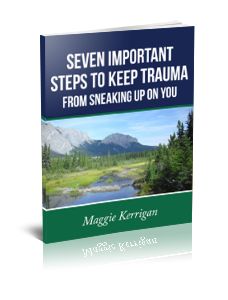Depression Treatment
 You just cannot shake yourself free. It seems as though depression has its hold on you. No matter what you do nothing seems to lift the dark cloud. You feel hopeless and helpless. Your self esteem is at an all time low. Your faith feels shaken and you wonder what is the use in trying. Nothing seems to be going your way.
You just cannot shake yourself free. It seems as though depression has its hold on you. No matter what you do nothing seems to lift the dark cloud. You feel hopeless and helpless. Your self esteem is at an all time low. Your faith feels shaken and you wonder what is the use in trying. Nothing seems to be going your way.
You no longer can ignore that
- You no longer smile.
- You cannot make decisions.
- You eat too much or too little.
- You cry frequently over insignificant events.
- You feel so exhausted you cannot concentrate.
- You prefer your own company and avoid friends.
- You do not see anything good happening in the future,
- You believe you have nothing to contribute to your family or work.
Coming Out of Freeze
With a body-centered depression treatment these symptoms can and do improve. When your nervous system is overwhelmed or traumatized, one strategy it will use to protect itself is to shut down or become “frozen.”
By addressing the underlying problem of depression as an overwhelmed nervous system that is stuck in the “freeze” mode, you can restore your sense of aliveness. The life that seemed frozen can begin to flow again and new life and growth seem possible. This is possible because the wiring in your brain is designed to help you to move through intense experiences such as those caused by loss, mistreatment or shock. Using a body-centered approach, I can help you to connect to this innate wisdom so that you begin to feel like yourself again.
You Are Designed to Freeze
You may feel shame or frustration that you are depressed. These are common responses when you think you should be able to will yourself out of depression. Usually this is not possible, however, because your body’s response to go into shut down is not a conscious choice. It is not something that your logical and rational mind controls.
When you face intense situations your nervous system will want to fight, flee or freeze. Sometimes, however, you are not be able to either fight or flee because you do not have enough time, space or support to respond to the situation in these ways. When this kind of situation happens your unconscious mind will choose the default mode of freeze. That way you can at least survive the situation, which is the main concern of your nervous system when you face a serious threat.
But wait…
Why would I want to seek a counseling depression treatment if I can treat it with medicine?
A more long-term and effective depression treatment uses a body-centered approach. Unlike medication, this helps you to address the underlying pain and trauma that caused you to become depressed. You will not only understand the origin of the depression but also move through the unexpressed urge to flee or flight, which is still trapped in your body. This is essential to do if you want relief from the symptoms of depression.
How long does depression treatment take?
This varies from one person to the next. Some of the factors that may determine how long it takes include:
- The kinds of traumatic events and the age you were when they happened.
In general, if they happened as an adult, your nervous system may be more resilient so you can bounce back sooner. Depression related to time-limited events such as car accidents or falls tends to resolve sooner than when depression is related to childhood abuse.
- The number of traumatic events.
The effects of trauma in the body can accumulate. When there are a series of events that cause the body to experience freeze, the treatment can take longer.
- The degree of support you had when the traumatic event occurred and when you are in treatment.
The more support you had shortly after the event, the more likely the depression will be short lived. If you have support from friends or family who are not judgmental while you seek treatment, the more energy you will have to focus on healing.
You Deserve the Right Help
Depression is serious and you deserve to get the most effective depression treatment. You want to get on with your life in the most efficient and cost effective way possible.
I believe that this is possible if the treatment includes a body-centered approach. I understand how depression is a signal that your body is overwhelmed. Having been trained first as a massage therapist prior to becoming a licensed counselor, I am oriented to working directly with the body to access healing. I am skilled in tracking the body to see how it is progressing out of freeze and releasing the impulse to flee or fight in safe ways. I understand how to avoid re-traumatizing the nervous system.
Many clients, who came to me, first worked with therapists who are more oriented to finding coping strategies to manage the depression. While these clients said these strategies gave them short term relief, they found that the symptoms readily returned worse than before. This happened when they faced mild distress because their nervous system had not yet dealt with the original threat.
Case Study
I saw Suzanne, not her real name, several months after her third car accident within a year. She had been referred by her doctor for depression treatment.
The last accident was so serious she required hospitalization to recover from many injuries.
As I observed her, I could see she was depressed; her nervous system was shut down. Suzanne’s face was expressionless and she barely moved.
She told me she could not concentrate or sleep and she had lost 15 pounds. Friendships no longer mattered and she was often content to stay inside and watch TV.
The first step in our work over the next couple months was to explore ways she could intentionally bring a little bit of aliveness to her body. She did this by remembering times when she played music and sang with friends. As she did this, she smiled. This helped to remind her nervous system that it was safe for her to feel some movement.
Next, we worked directly with the memory of the accident. I asked Suzanne to tell me just short segments of the story. That way, unpleasant memories did not overwhelm her and put her back into freeze.
In one session, she altered the image of a fast oncoming car to a slow one. Using this imagery, she noticed that her body went through the motions of defending herself by turning the wheel and applying the brake. I did not tell her to do this. These spontaneous movements represented her way of fleeing the danger of the oncoming car.
During other sessions she explored how her body wanted to express feelings of anger and grief. These expressions, combined with being able to complete the urge to flee, led to a significant reduction in the depression. When I last saw her, her eyes sparkled and she told me about all the things she wanted to do with her friends.
What to Do Next?
You may need more information about depression treatment. Two very good sources of information are in my free newsletter Healing After Trauma and the blogs I write about this kind of treatment. You can subscribe by simply completing the boxes on this page. In addition, the resource page can direct you to books and videos you may find helpful.
If you are considering working with me, I offer a 30-minute complementary consult. That way you and I will get to see if we are a good fit for one another. I can be reached at 720-635-7943 or send me an email on my contact page.





